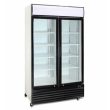When it comes to investing your hard-earned money, there’s no such thing as too much diversification. Diversifying your savings portfolio means spreading out your investments across different types of assets, reducing the risk of losing all your money in case one investment goes sour. However, not all investments are created equal – some are safe but yield low returns, while others promise high yields but come with higher risks. In this blog post, we’ll explore how you can diversify your savings portfolio with safe and high-yield investments that will help you grow your wealth without compromising on security.
What is diversification?
Diversification is an investment strategy that involves spreading your money across different types of assets. This means not putting all your eggs in one basket, so to speak. By diversifying, you can reduce the risk of losing all your money if one particular asset or market takes a hit.
The goal of diversification is to minimize risk while maximizing returns. When you invest in multiple assets that are not correlated with each other, their performance will tend to balance out over time. For example, if stocks are down, bonds might be up – and vice versa.
Diversification doesn’t just apply to different types of assets but also within those asset classes as well. For instance, when investing in stocks, it’s wise to spread out investments across various sectors like technology, healthcare and consumer goods rather than investing solely in one sector.
Ultimately, diversification aims to provide a smoother ride for investors by reducing volatility without sacrificing long-term growth potential. By taking a diversified approach towards investing your savings portfolio now can help set yourself up for financial success later on!
The benefits of diversification
Diversification is an important strategy to help protect your savings portfolio against market fluctuations. By investing in a variety of different assets, you spread out your risk and increase the chances that at least some of your investments will perform well during any given period.
One major benefit of diversification is the ability to reduce volatility. When you invest in just one or two stocks, for example, you’re putting all your eggs in one basket. If those companies experience financial difficulties or their stock prices decline sharply, it can have a significant impact on your investment returns.
Another advantage of diversification is the potential for higher long-term returns. While safe investments like bonds and cash may provide stability in the short term, they typically offer lower returns than more volatile assets like stocks or real estate over longer periods.
Diversification can also help investors achieve specific goals. For example, if you’re looking to generate income from your portfolio while still maintaining a level of safety, you might consider investing in high-yield bonds or dividend-paying stocks alongside safer fixed-income investments.
Ultimately, diversification helps investors balance risk and reward by spreading out their money across multiple asset classes. Whether you’re a conservative investor looking for stability or an aggressive investor seeking growth opportunities, incorporating diversification into your strategy can help improve your chances of success over time.
Safe, high-yield investments
When it comes to investing your hard-earned money, safety should always be a top priority. Thankfully, there are several safe and high-yield investment options available in the market that can help you grow your savings while minimizing risk.
One of the best examples of a safe and high-yield investment is a Certificate of Deposit (CD). CDs offer fixed interest rates for a specified period, ranging from 6 months to 5 years. They are considered low-risk investments because they are FDIC-insured up to $250,000 per account holder.
Another option is municipal bonds. These are issued by state and local governments to fund public projects like schools and hospitals. Municipal bonds have tax advantages as their interest income is usually exempt from federal taxes.
Real Estate Investment Trusts (REITs) are also worth considering if you want to diversify your portfolio with real estate holdings without actually owning property yourself. REITs invest in various types of properties such as apartments, hotels or commercial buildings – offering investors regular dividends along with potential capital appreciation.
Dividend-paying stocks can also provide steady returns over time through consistent payouts made by companies that generate stable profits year after year. However, it’s important to note that not all dividend-paying stocks are created equal – research carefully before making any purchase decisions.
Incorporating some safe but high-yield investments into your portfolio can help protect against market volatility while still generating solid returns over time.
How to diversify your savings portfolio
Diversifying your savings portfolio is an essential step to ensure long-term financial stability. The first thing you need to do is assess the different types of investments available in the market and their risk-return profile.
One way to diversify your portfolio is by investing in mutual funds or exchange-traded funds (ETFs). These investment vehicles hold a basket of stocks or bonds, providing exposure to multiple companies and sectors that can help reduce risks.
Another option for diversification is real estate investment trusts (REITs). REITs are listed entities that invest in income-generating properties like office buildings, malls, and hotels. Investing in REITs provides access to the real estate sector with lower entry barriers than buying direct property.
Investing in gold or other precious metals can also be an effective method for portfolio diversification as they tend to have low correlation with traditional asset classes such as equities and bonds.
Consider adding fixed-income securities like government bonds, corporate bonds or CDs into your investment mix which offer regular interest payments while reducing overall risk.
Remember that there’s no one-size-fits-all solution when it comes to investing; developing a diversified savings portfolio requires patience and careful analysis of personal goals and objectives along with understanding each instrument’s performance track record over time.
Conclusion
In summary, diversifying your savings portfolio with safe, high-yield investments is a smart strategy for achieving financial stability and growth. By investing in different asset classes and spreading out risk across multiple securities, you can protect yourself from market fluctuations while generating consistent returns on your money.
Remember to do your due diligence when researching potential investments and seek the advice of a financial professional if you’re unsure about what types of assets are right for you. With smart planning and careful execution, you can build a diversified investment portfolio that meets your short- and long-term financial goals.
So start today by exploring some of the safe, high-yield investment options we’ve discussed in this article–such as dividend-paying stocks or low-cost index funds–and see how they might fit into your overall savings plan. With time and patience, you’ll be well on your way to building a more secure financial future for yourself and those around you.











